
Tea Utensils & Procedures Terminology
道具 (dōgu)
utensils/implements/tools
Literally, implements or utensils of the way (dō). In chanoyu, the main dōgu are those objects that come in direct contact with the matcha, such as tea bowls and tea containers. There are also many utilitarian objects such as tea whisks, bamboo ladles, cast iron kettles etc. Over seventy individual items, which all fall under the category dōgu, are used during a tea gathering, during which food, sake, sweets, and tea are served.
名物 (meibutsu)
famous object
This word has multiple related but distinct meanings: antique masterpieces of Asian art coveted by tea practitioners; heirloom swords passed down in warrior lineages; prized products of different regions of Japan. Specific to chanoyu, meibutsu refers to utensils (dōgu) that have names and histories of ownership by famous tea masters. Many such objects are today held in museum collections. In tea culture, the first first mention of meibutsu is in "Record of Praiseworthy Famous Objects" (Seigan meibutsuki 清玩名物記), which lists 414 objects by category and also notes previous and current owners by location up to the end of the Tenbun period (1532–1555).
茶碗 (chawan)
teabowl/tea bowl
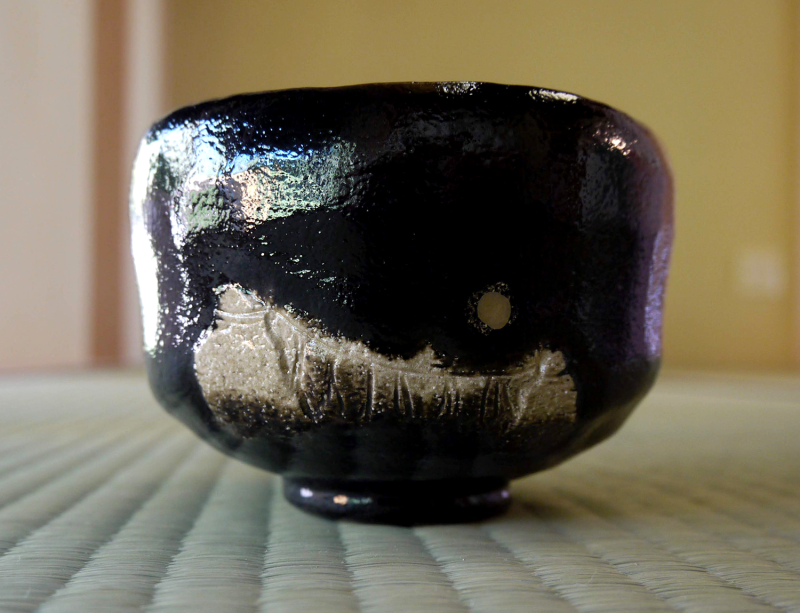
Generic word for any bowl used to make tea. Bowls for use in chanoyu are usually larger than other tea bowls or cups to facilitate whisking or blending and can be made of porcelain, pottery, or sometimes glass. In English some scholars prefer "teabowl" as one word while others write it as two words, "tea bowl." You will see both used in this project depending on the preference of the author.
茶杓 (chashaku)
tea scoop
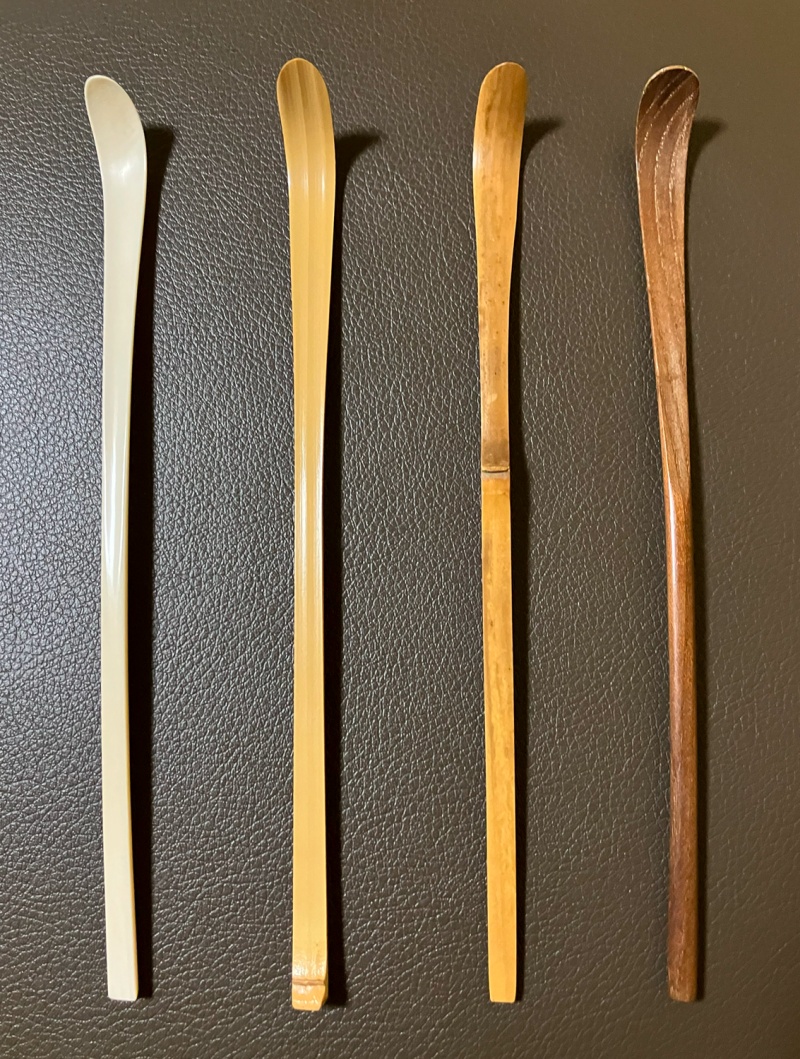
Used to scoop powdered tea from the tea caddies and containers. Most commonly made of bamboo, wood, or ivory.
茶筅 (chasen)
tea whisk
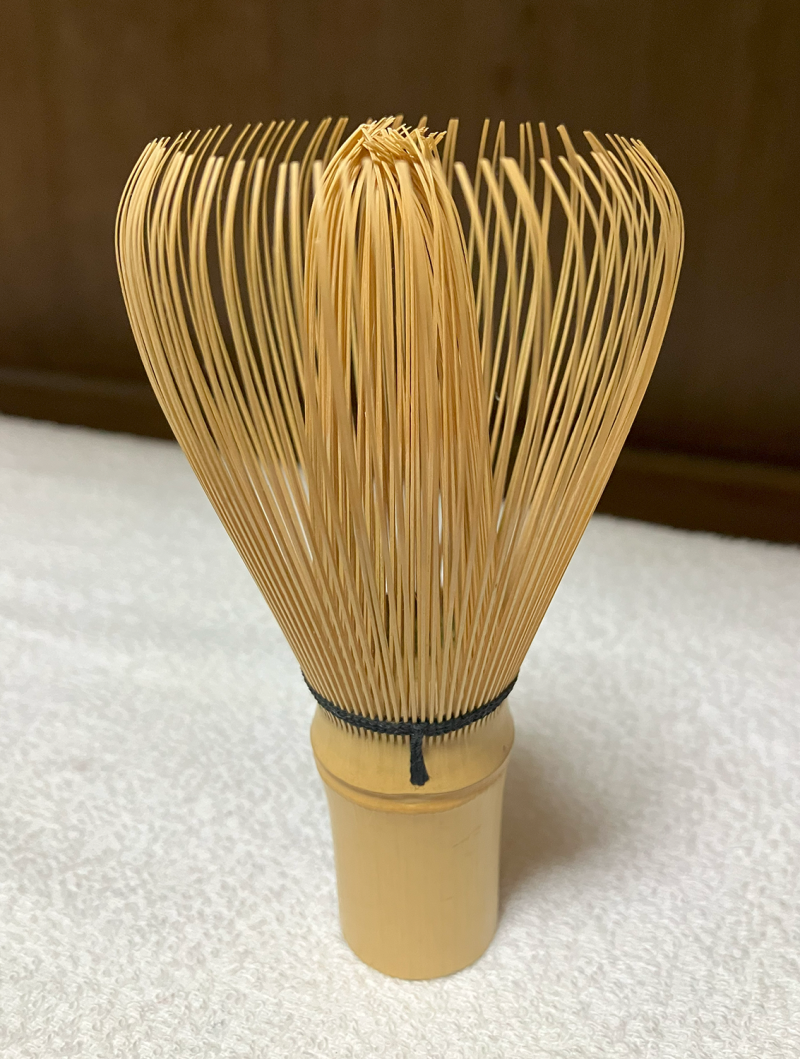
A bamboo tube from which delicate tines are carved. It is used for whisking matcha.
茶巾 (chakin)
linen wiping cloth
Used to purify a tea bowl before making the tea.
茶入 (chaire)
thick tea container
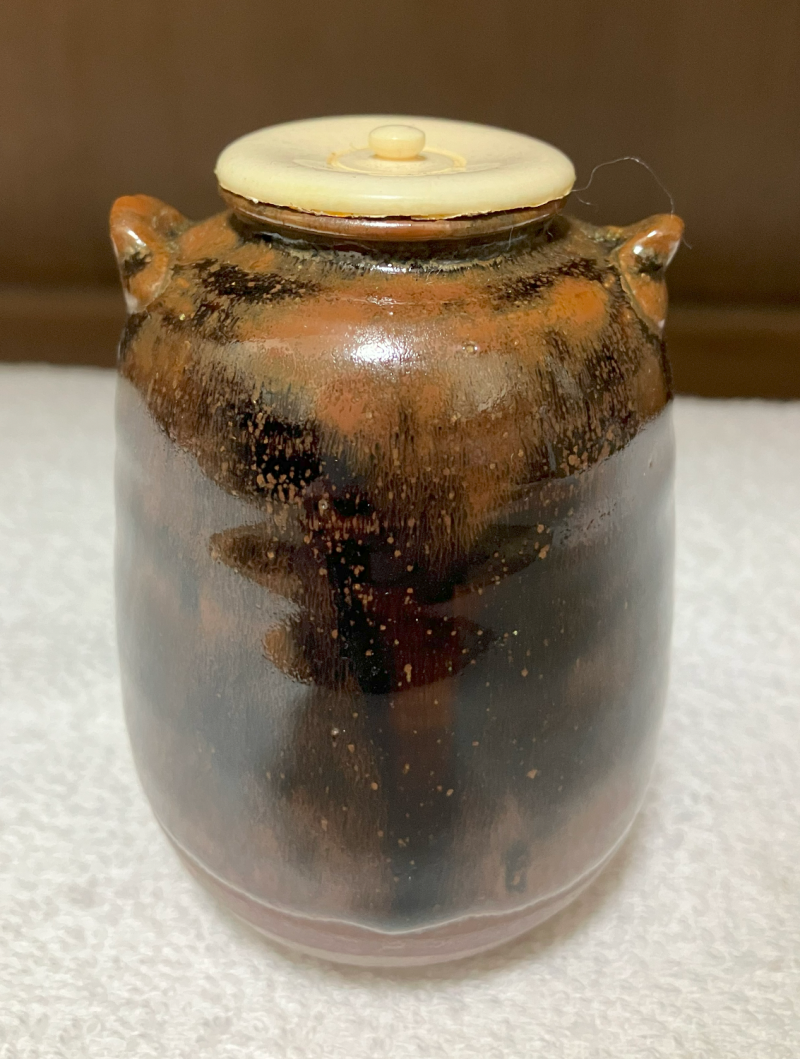
Used to hold the tea powder during the making of thick tea (koicha). Typically ceramic.
仕覆 (shifuku)
pouch to hold a thick tea container
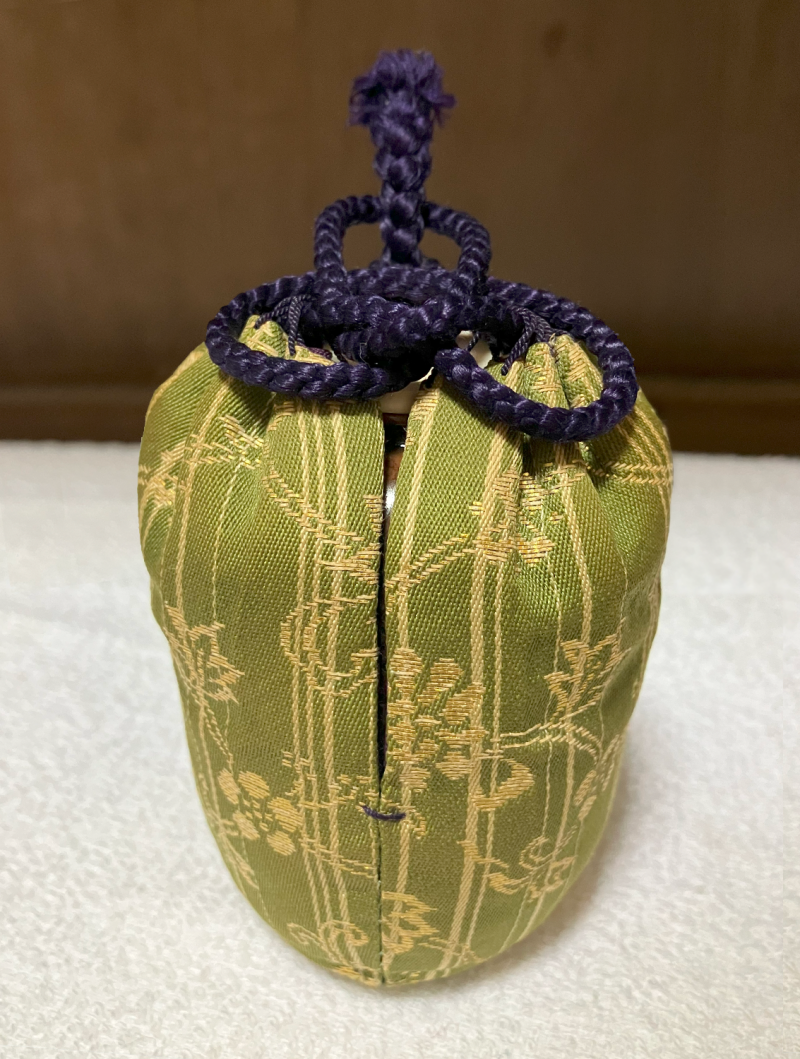
A fitted fabric bag with a drawstring in which the thick tea container is housed. They are typically made of silk and highly decorated, sometimes with famous patterns (meibutsu gire) that have names and are associated with certain historical figures.
棗 (natsume)
tea container
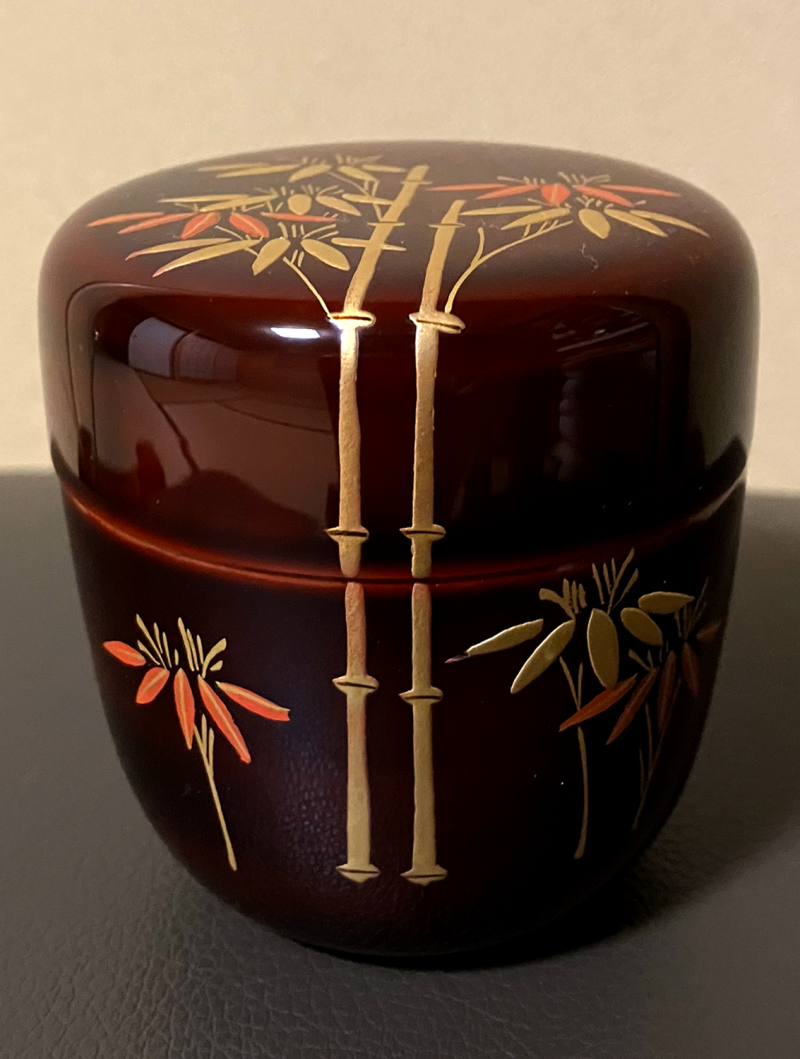
A specific shape of tea container, most often used for thin tea (usucha). It is a shape resembling a jujube (or Chinese date). Commonly lacquerware, but also made of paper mache, glass, wood, and other materials.
薄茶器 (usuchaki)
thin tea container
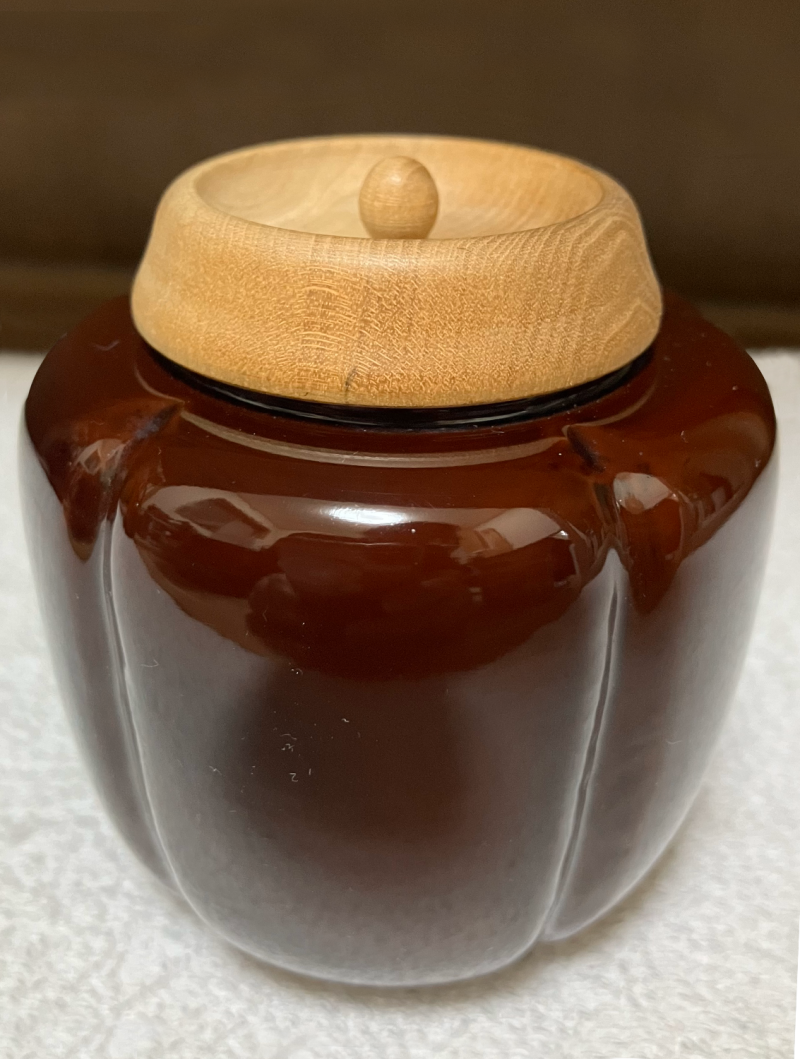
Used to hold the tea powder, usually during the making of thin tea (usucha). Commonly lacquerware, but paper mache, glass, wood, and other materials can be used. A natsume is one type of usuchaki.
水指 (mizusashi)
fresh-water container
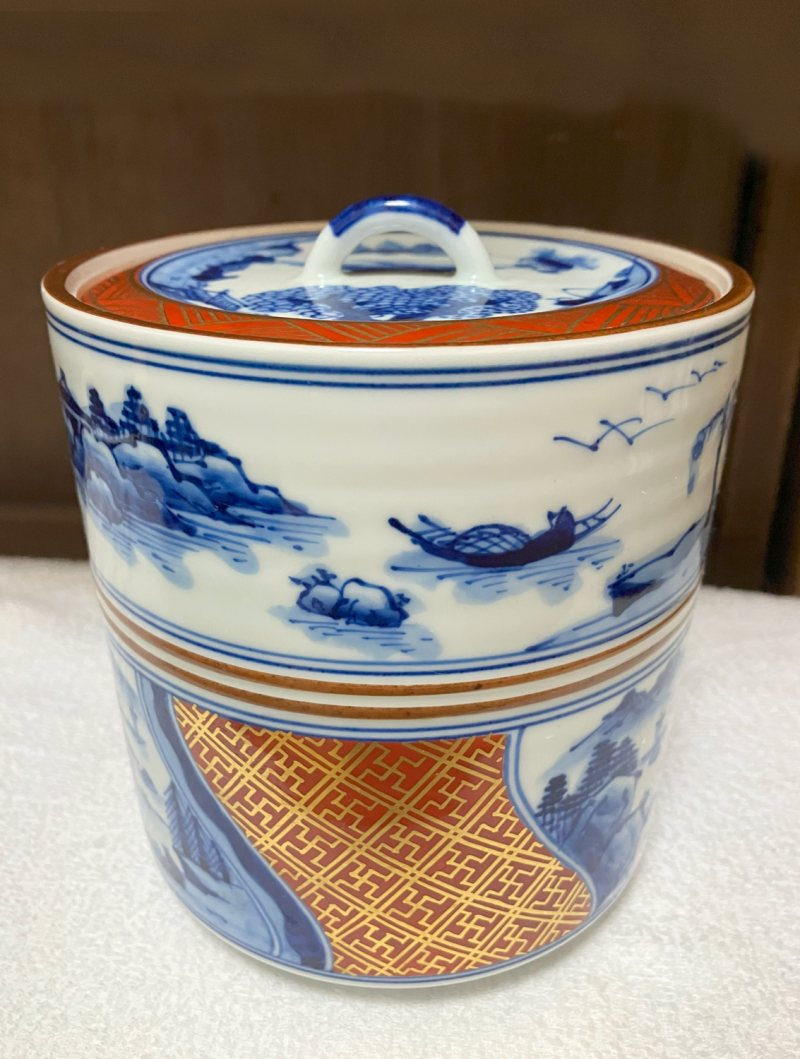
Used to hold cold water during the process of making tea for guests. The water is used both for purification/preparation of certain utensils (dōgu) but also to replenish the water or to adjust the temperature of the boiling water in the kettle.
建水 (kensui)
rinse-water container

A container into which rinse water can be dumped during the tea-making procedures.
風炉先屏風 (furosaki byōbu)
screen placed behind the brazier
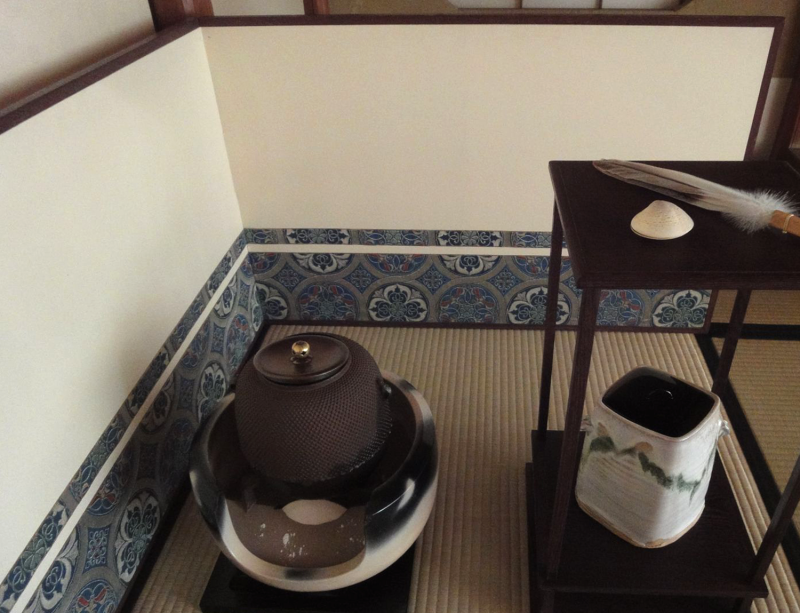
A folding screen which demarcates the far end of the host's mat. Typically used in tea rooms which are 4.5 tatami mats or larger.
釜 (kama)
kettle
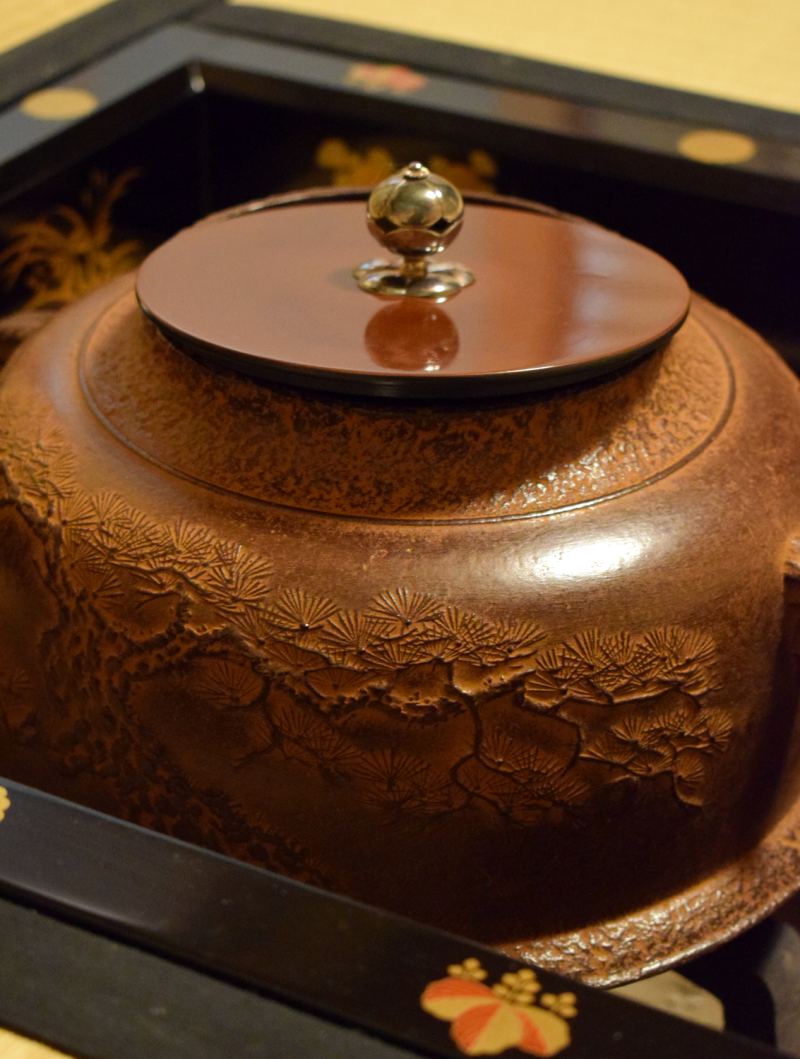
Set over a bed of ash and burning charcoal, it holds the boiling water for making tea.
柄杓 (hishaku)
water ladle
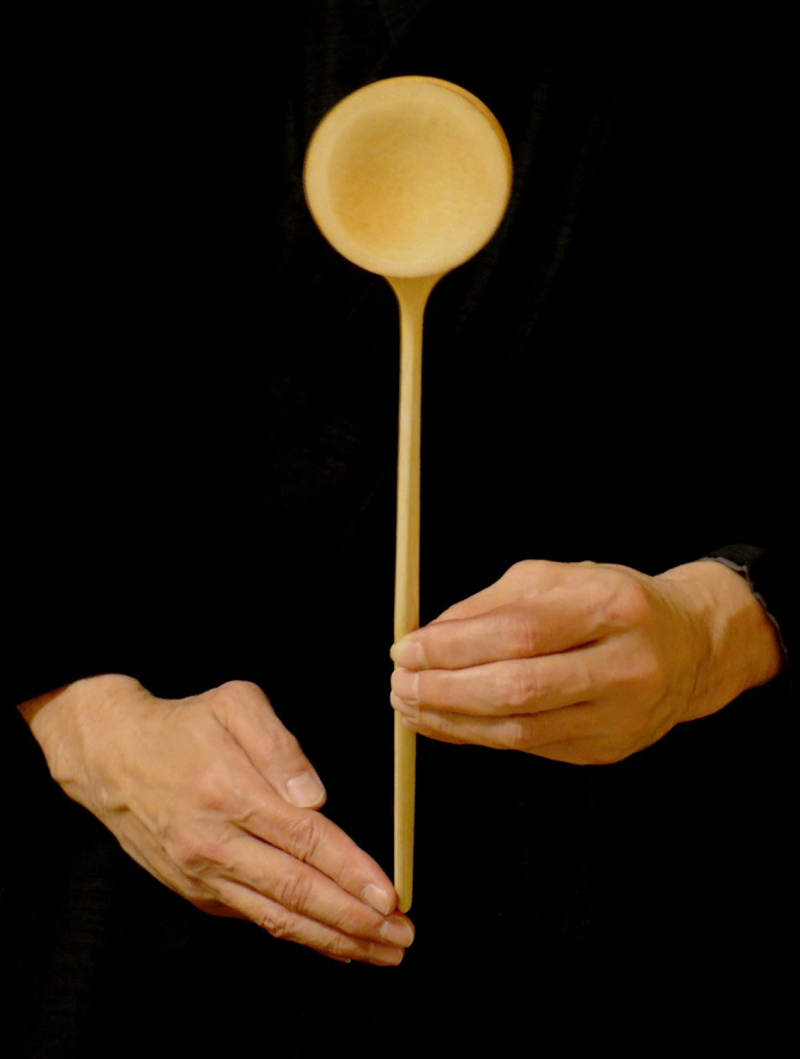
A bamboo ladle, used while making tea, to scoop hot water from the kettle (kama) or cold water from the fresh-water container (muzusashi).
蓋置 (futaoki)
lid rest
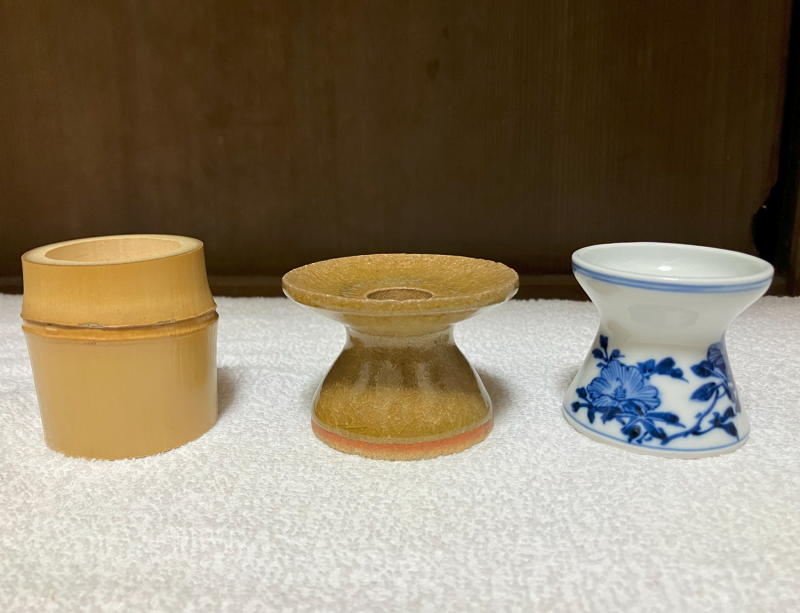
A small utensil upon which the lid for the kettle (kama) is placed when the kettle has been opened. It is also used as a rest for the water ladle. It may be made of bamboo, ceramic, metal, lacquer, etc.
香合 (kōgō)
incense container
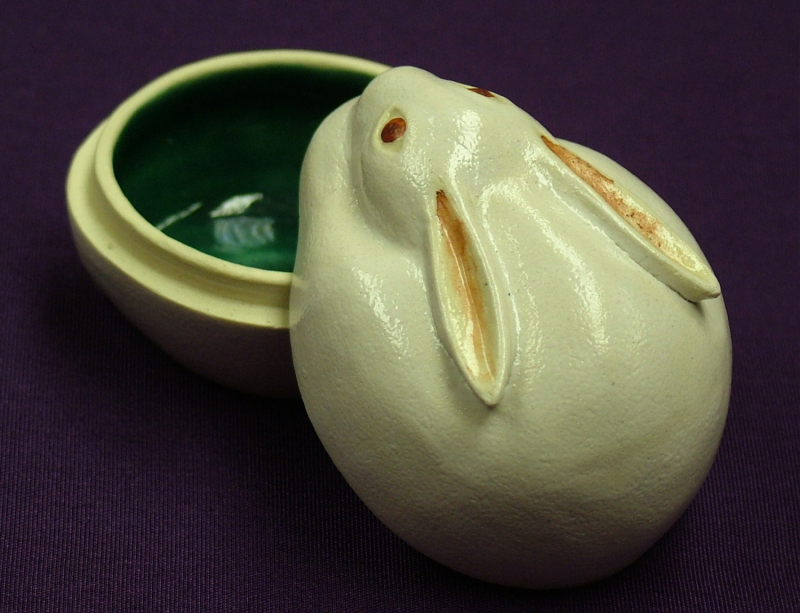
A container that is used to hold a small amount of incense during a charcoal laying procedure, when incense is placed into the fire, or for display in the alcove (tokonoma). Most commonly ceramic, wood, or shell. Conventionally, a ceramic/pottery container is used during the sunken hearth season (approximately November through April) and a lacquered one is used during the brazier season (approximately May through October).
お香 (okō)
incense
A general term for a variety of incense.
練香 (nerikō)
kneaded incense
An incense pastille made by blending various materials (spices, oils, fragrant wood). For some tea schools, it is used primarily in the sunken hearth season (approximately November through April).
香木 (kōboku)
aromatic wood
Fragrant wood that is cut into small pieces and burned, as is, as an incense. For some tea schools, it is primarily used in the brazier season (approximately May through October).
棚 (tana)
utensil stand
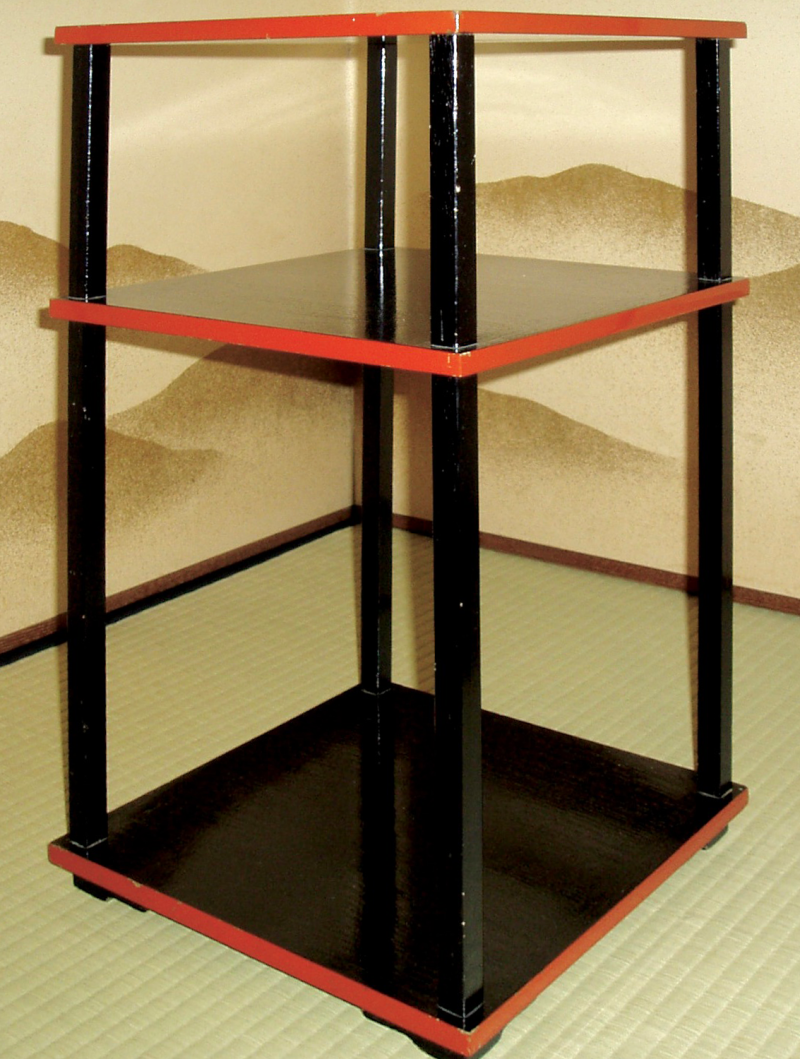
There is a wide variety of these utensil stands—differing in size, structure, and style. A utensil stand might have the fresh-water container (mizusashi), tea container (such as a natsume or chaire), or bamboo ladle (hishaku) placed on it at the beginning, during, or end of the tea making procedure (temae).
掛軸 (kakejiku)
hanging scroll
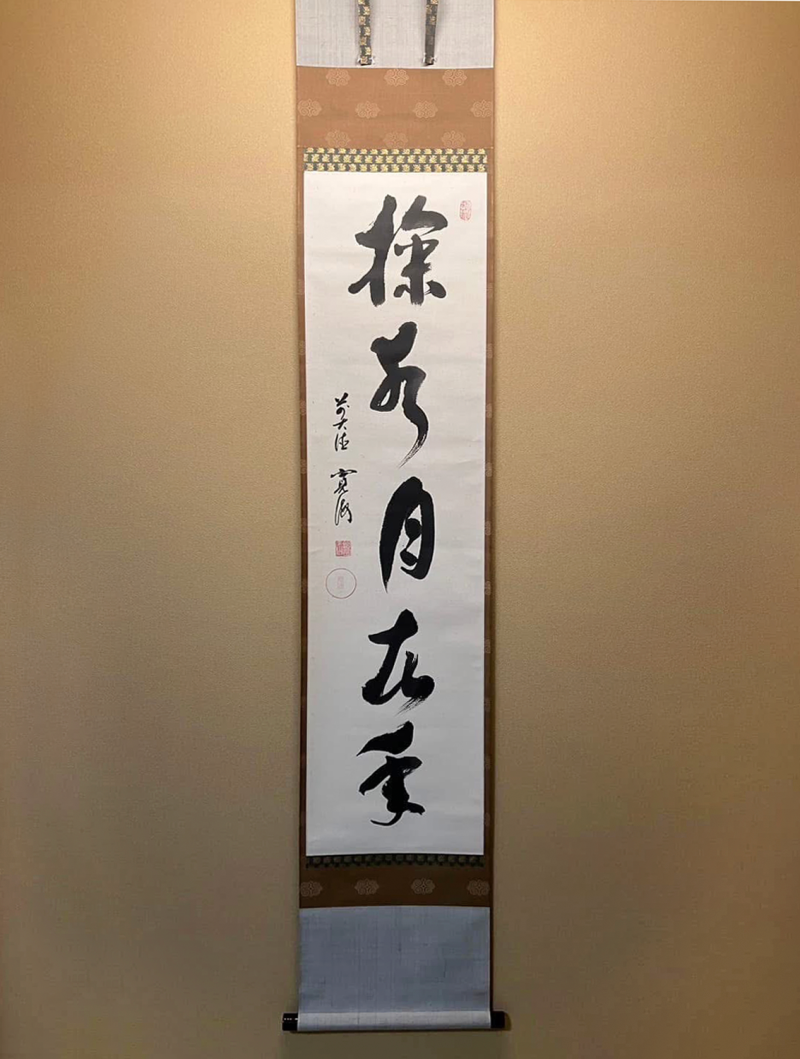
Hung in the alcove of a tea room or in the waiting room. Scrolls that are hung in the tea room most frequently present a Zen expression brushed in calligraphy. But they can also sometimes be a poem, a painting, or a letter. The hanging scroll is the first thing a guest sees when they enter the tea room and is said to set the tone for the tea gathering.
帛紗 (fukusa)
silk cloth for purifying tools
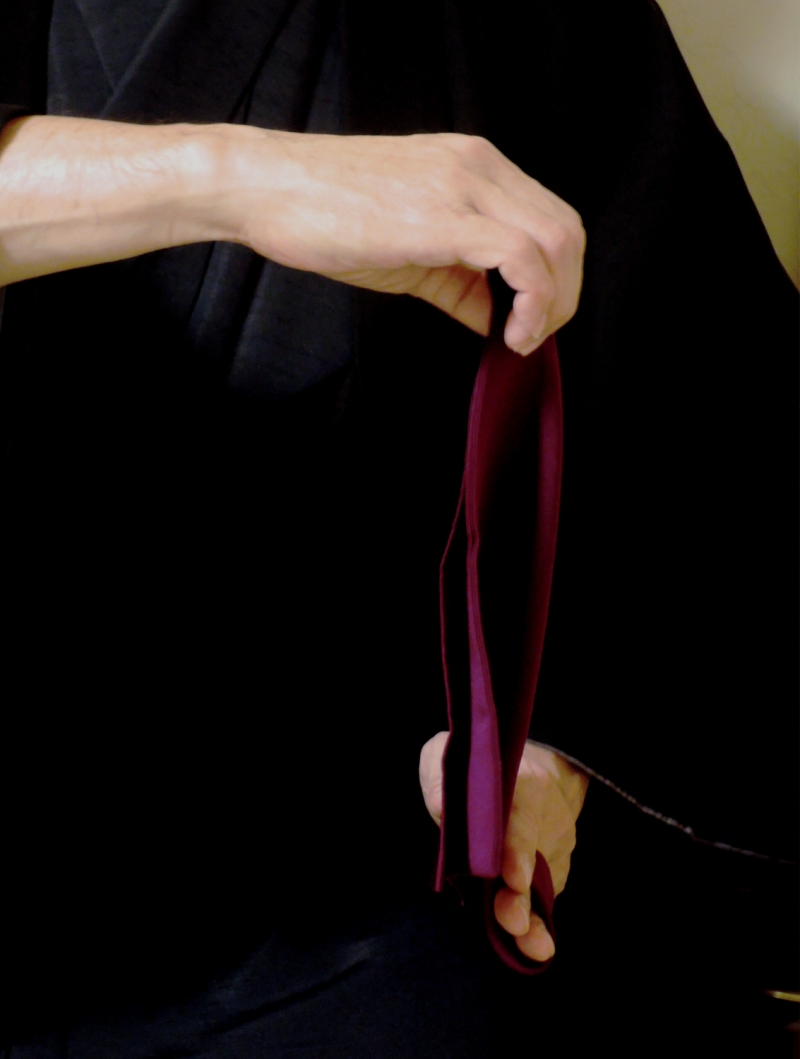
A square of silk cloth that is commonly used to purify the tea container (for thin or thick tea) and the tea scoop. Also used to purify other utensils, such as lacquer lids and trays. They come in a variety of colors, sometimes with designs on them.
古帛紗 (kobukusa)
silk cloth for handling utensils
A square of silk cloth that is smaller than a fukusa and often a little heavier weight. It is kept folded in half inside a tea practitioner's kimono and used by either the host or guest when certain utensils need to be placed on something for protection rather than directly on the tatami, or, in the case of a tea bowl, if the host thinks it may be too hot for the guest's bare hands to hold, they will offer them a kobukusa to use. They are typically highly decorated, sometimes with famous patterns (meibutsu gire) that have names and are associated with certain historical figures.
茶箱 (chabako)
tea box
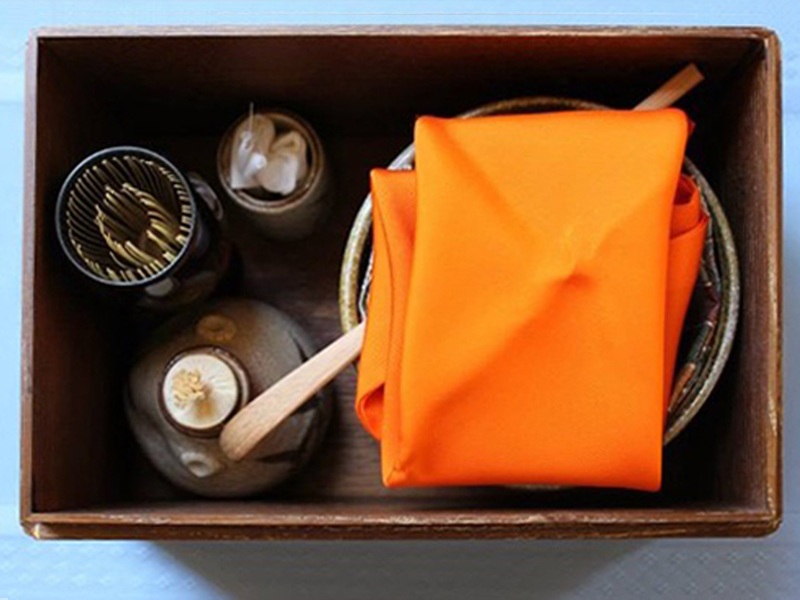
A box that holds all of the necessary utensils for making tea. There are a variety of shapes and designs of such boxes, as well as several different tea making procedures (temae) that use them. Tea boxes can be used inside a tea room and are also particularly suited to outdoor use given their portability.
炉 (ro)
sunken hearth
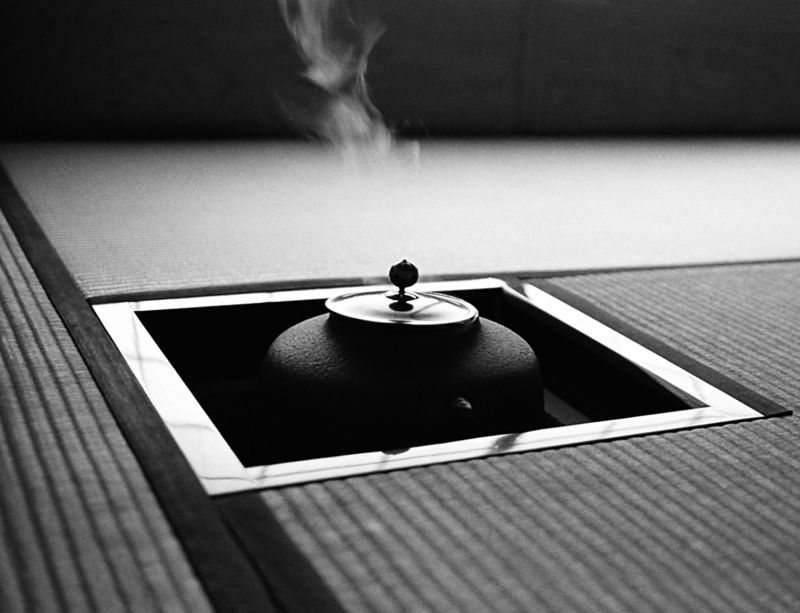
Commonly used in the winter months (November to April in the Northern hemisphere).
風炉 (furo)
brazier
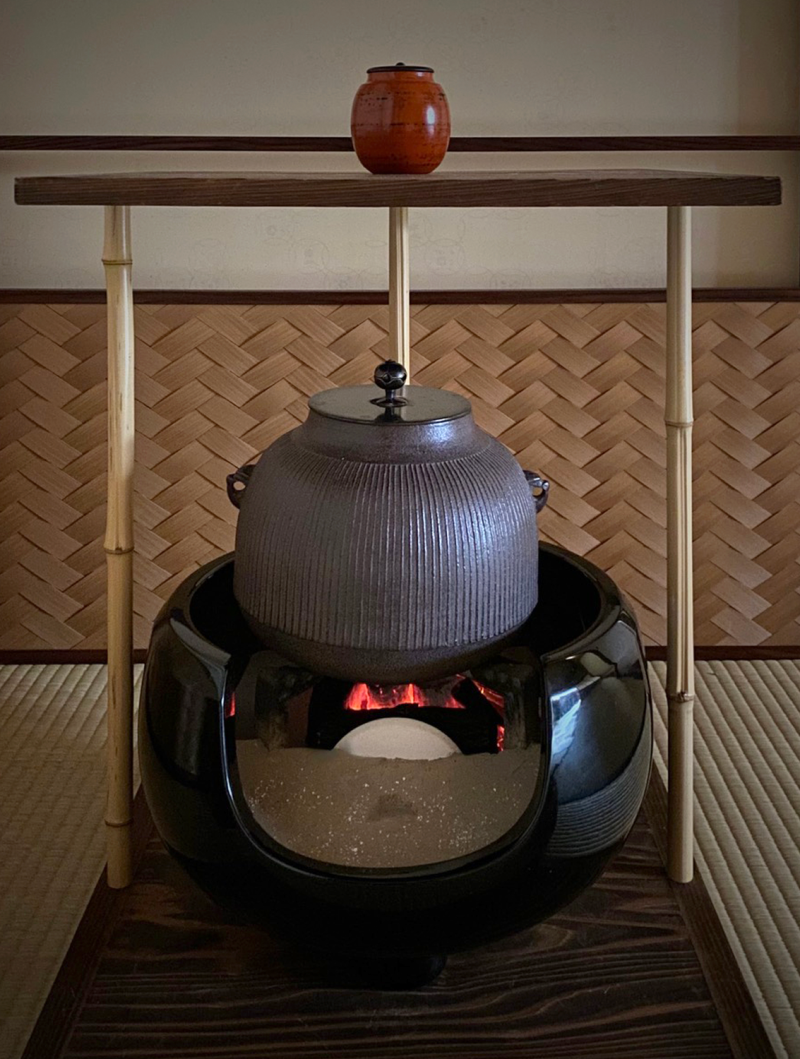
Commonly used in the spring and summer months (May to October in the Northern hemisphere).
菓子鉢 (kashi bachi)
a dish for serving moist sweets
For some tea schools, it is primarily used when serving moist sweets for thin tea.
干菓子器 (higashi ki)
a dish for serving dry sweets
Commonly used to serve dry sweets for thin tea.
縁高 (fuchidaka)
a layered container for serving sweets
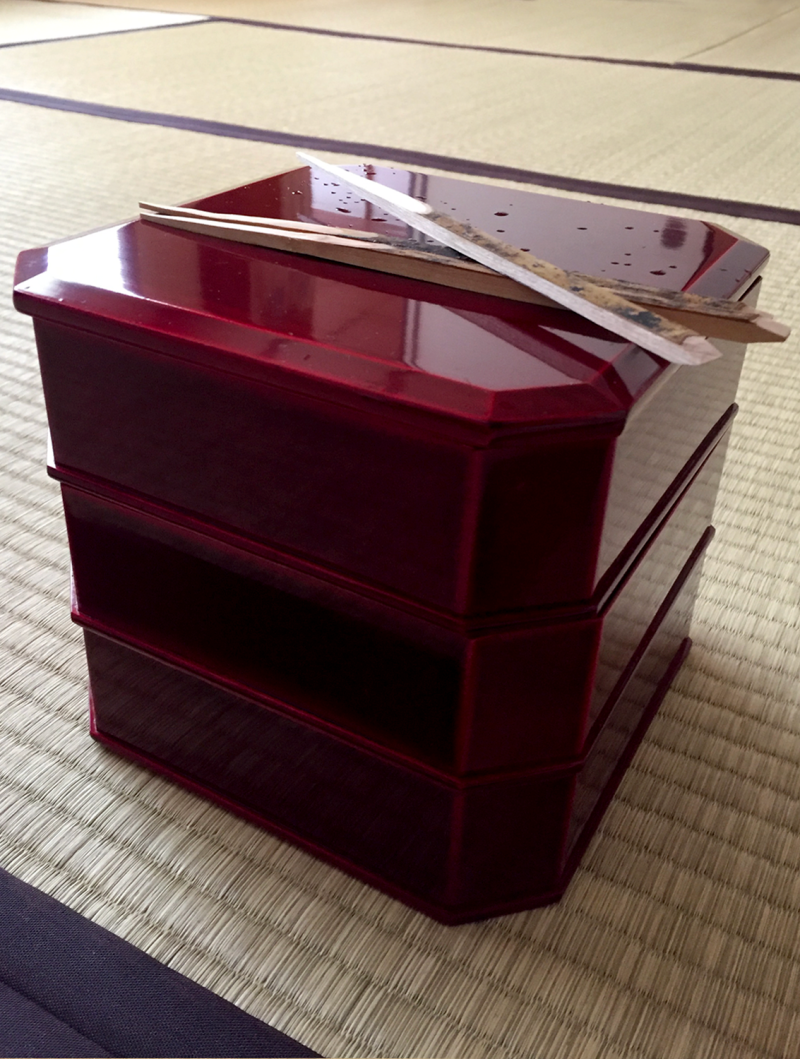
Often made of lacquer. For some tea schools, it is primarily used when serving moist sweets for thick tea.
灰 (hai)
ash
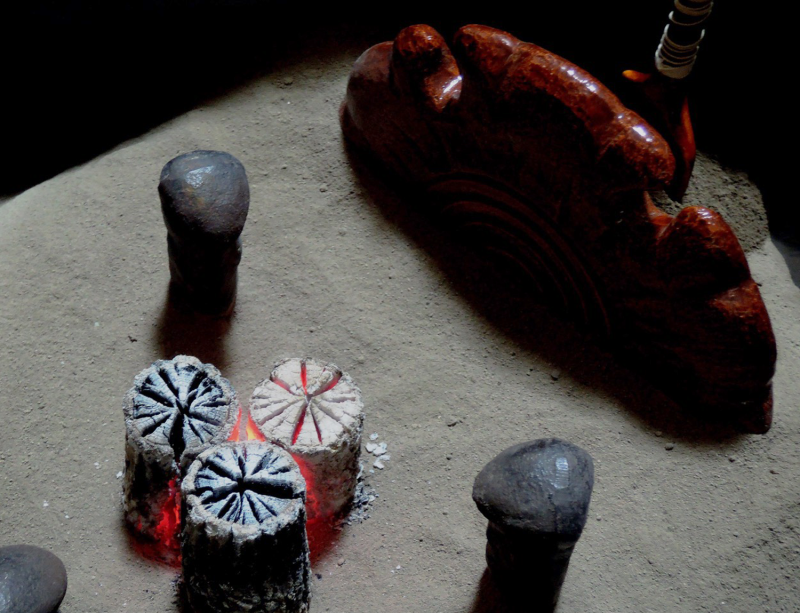
A bed of ash is prepared at the bottom of either the brazier or the sunken hearth. Burning coals are placed in the middle to heat the hot water for making tea.
灰匙 (hai saji)
ash scoop
A metal spatula used to transfer ash.
羽箒 (habōki)
feather broom
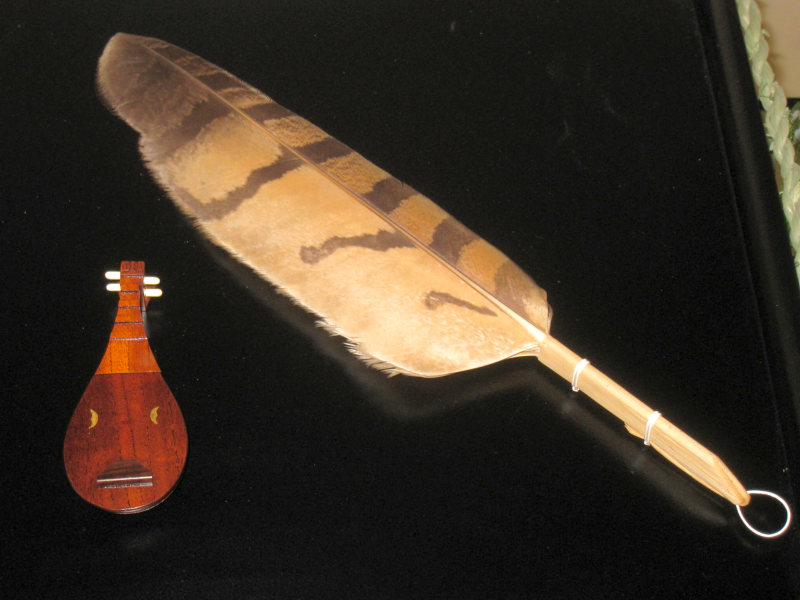
(lit. feather) Used to purify various tools, including the kettle lid, the brazier rim, and hearth frame. Also known colloquially as 羽 (hane).
火箸 (hibashi)
metal chopsticks
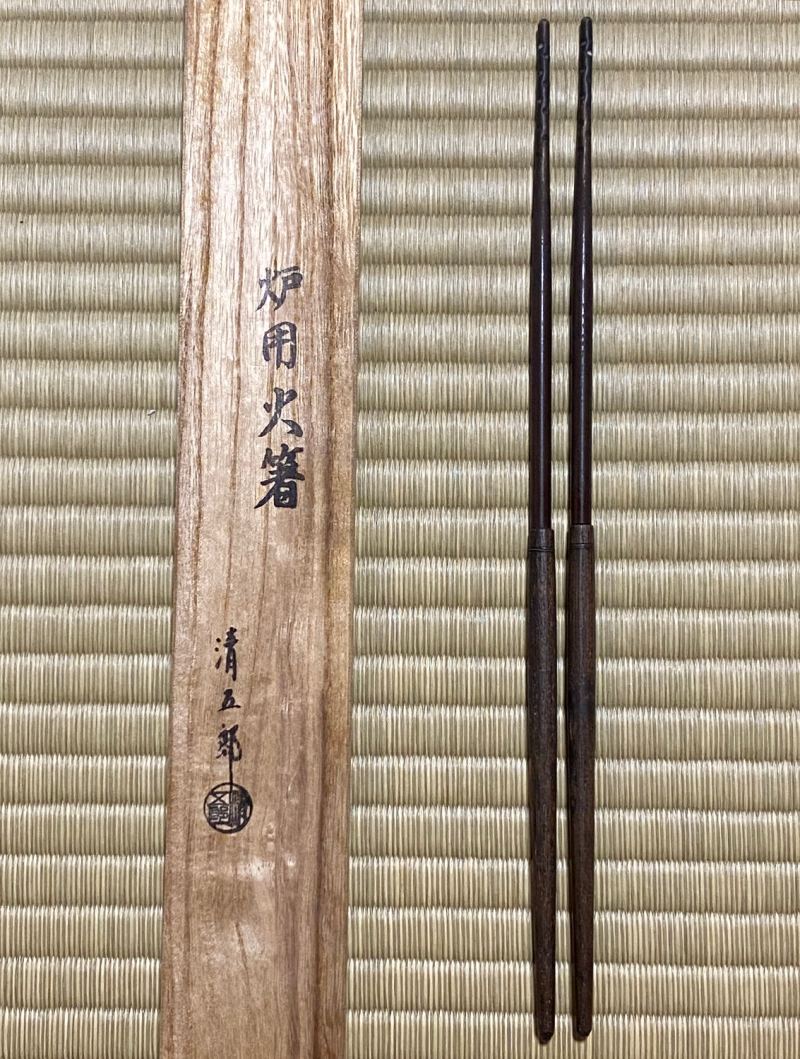
(lit. fire chopsticks) Used during charcoal-laying procedures to handle the fresh or burning charcoal and the incense.
鐶・かん (kan)
kettle rings
Metal rings that can be fitted into lugs on either side of the kettle body to lift, place, or carry it.
炭 (sumi)
charcoal
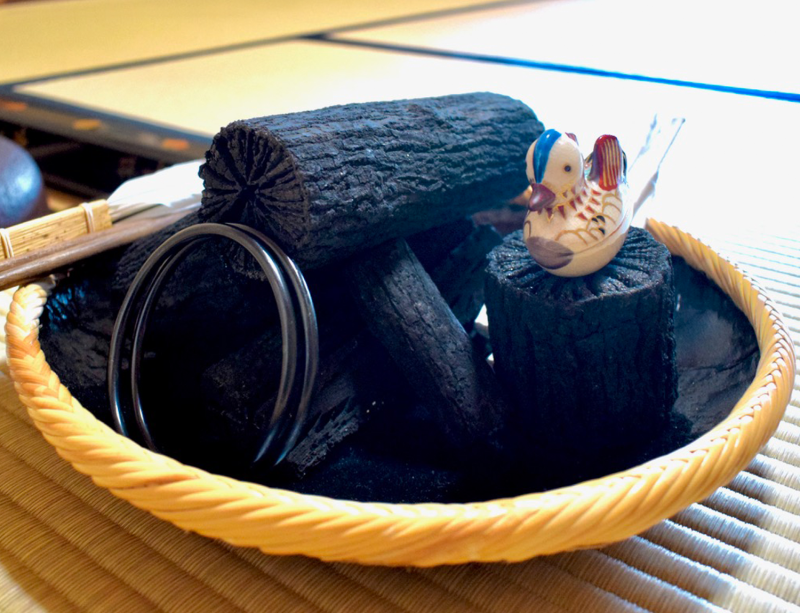
Usually made from a type of sawtooth oak, charcoal for tea is made to be relatively smoke-free. Branches are fired and then sawed, preserving the shape of the original branch.
枝炭 (edazumi)
white twig charcoal
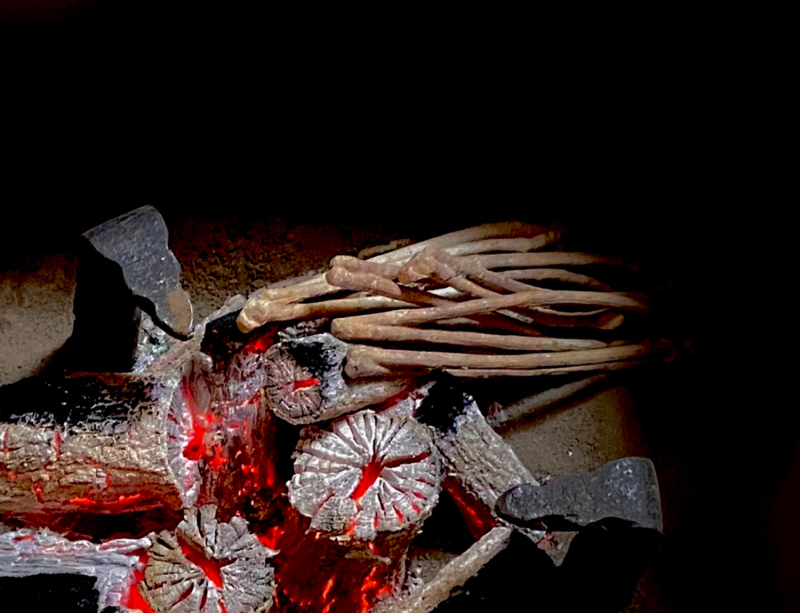
(lit. branch charcoal) Thin charcoal pieces painted white with lime. Three pieces are used in summer and five in winter.
炭籠 (sumi kago)
basket for charcoal
Used during a charcoal-laying procedure to carry in fresh charcoal and most of the necessary utensils for setting up the charcoal.
釜式 (kamashiki)
kettle mat
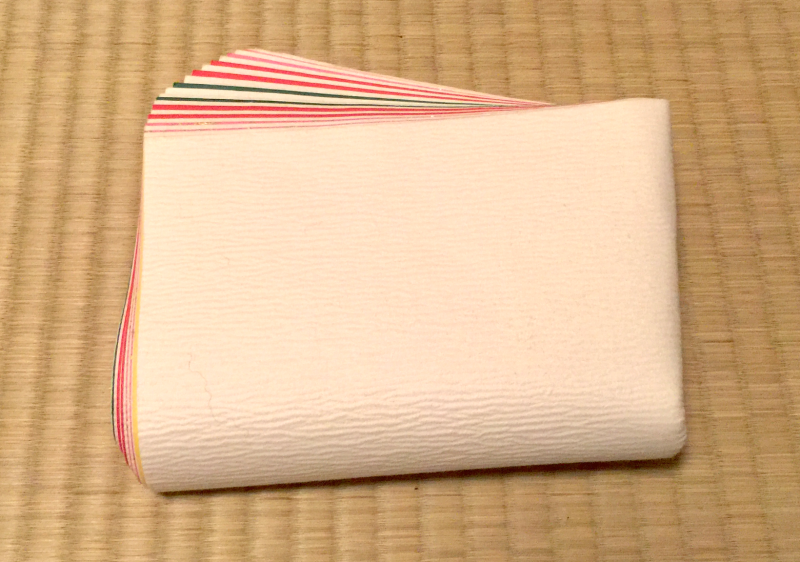
A trivet-like tool (usually made from paper or woven from a plant) upon which the kettle can be temporarily placed when it is removed from the coals while the host refreshes the charcoal.
灰器 (haiki)
ash container
A shallow vessel used to carry ash into the tea room.
敷板 (shiki ita)
board upon which the brazier rests
A ceramic or wooden board placed beneath the brazier.
点前 (temae)
general term for tea-making procedures
The sequence of steps undertaken by the host to make a delicious bowl of tea. Temae may generally be thought of in three parts: the preparation or purification of the utensils, the making and receiving of the tea, and the restoring of the utensils to their original state and position. Temae may also include a fourth part, which is the preparation and viewing of specific utensils requested to be seen by the guest.
薄茶点前 (usucha demae)
procedure for making thin tea
The sequence of steps specific to the making of thin tea.
濃茶点前 (koicha demae)
procedure for making thick tea
The sequence of steps specific to the making of thick tea.
手前 (temae)
general term for setting out the charcoal
The sequence of steps undertaken by the host to lay the charcoal in either the sunken hearth or the brazier. Note that while the pronunciation is the same, the Chinese characters used for the tea-making procedure and setting out the charcoal are different.
炭手前 (sumi demae)
procedure for setting out the charcoal
The sequence of steps undertaken by the host to lay out the charcoal necessary to boil water for making tea. The sequence begins when the host enters the tea room with the basket containing the fresh coals, proceeds through tasks to place the coals in the bed of ash below the kettle, and usually ends by placing a small amount of incense alongside the charcoal. This is followed by a viewing of the incense container (kōgō) by the guests.
壺 (tsubo)
tea leaf storage jar
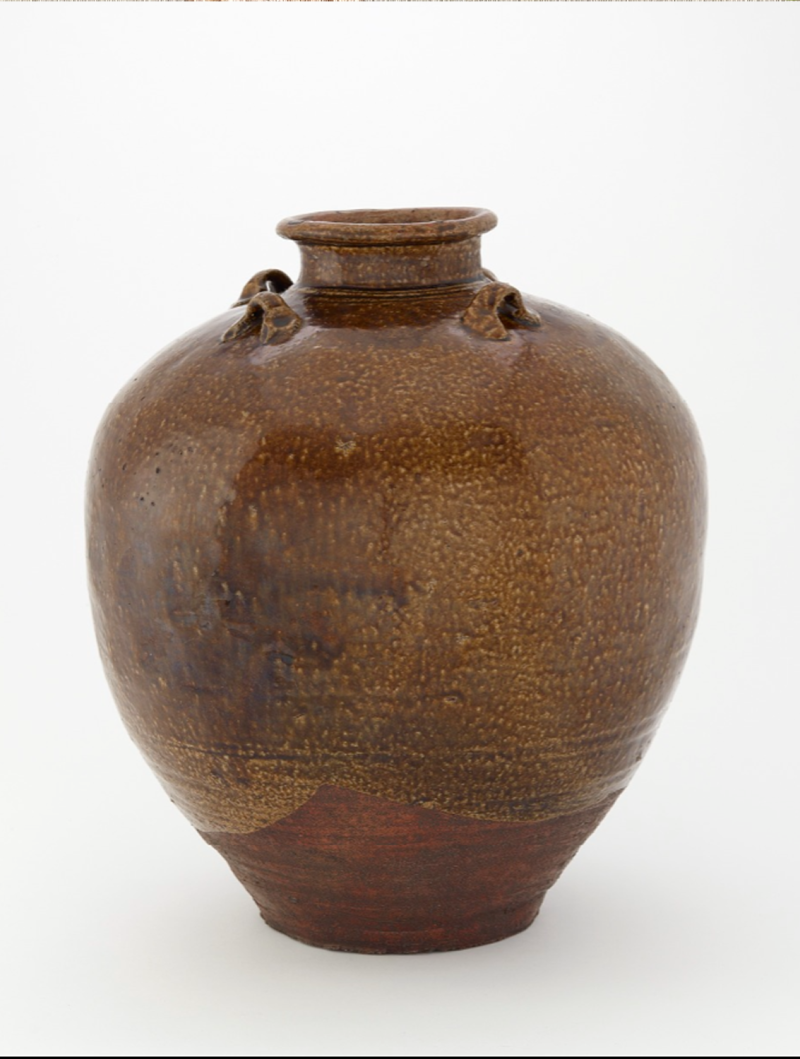
A large ceramic jar used to store harvested tea leaves. Typically, tea would be harvested in May and stored until its first use in the beginning of November. The jar is closed and sealed with a wooden stopper and a paper seal. The occasion for opening the jar is sometimes called kuchi-kiri, or cutting the paper seal of the mouth. On this occasion, the jar is dressed with a special fabric mouth cover (kuchioi) and silk cords (kuchio and nagao). The occasion for opening the jar coincides with the beginning of the winter season when the sunken hearth is first opened.
短冊 (tanzaku)
long rectangular paperboard
A placard that can be mounted informally to place a brushed poem or Zen phrase in the anteroom, waiting room, or tea room.
色紙 (shikishi)
square paperboard
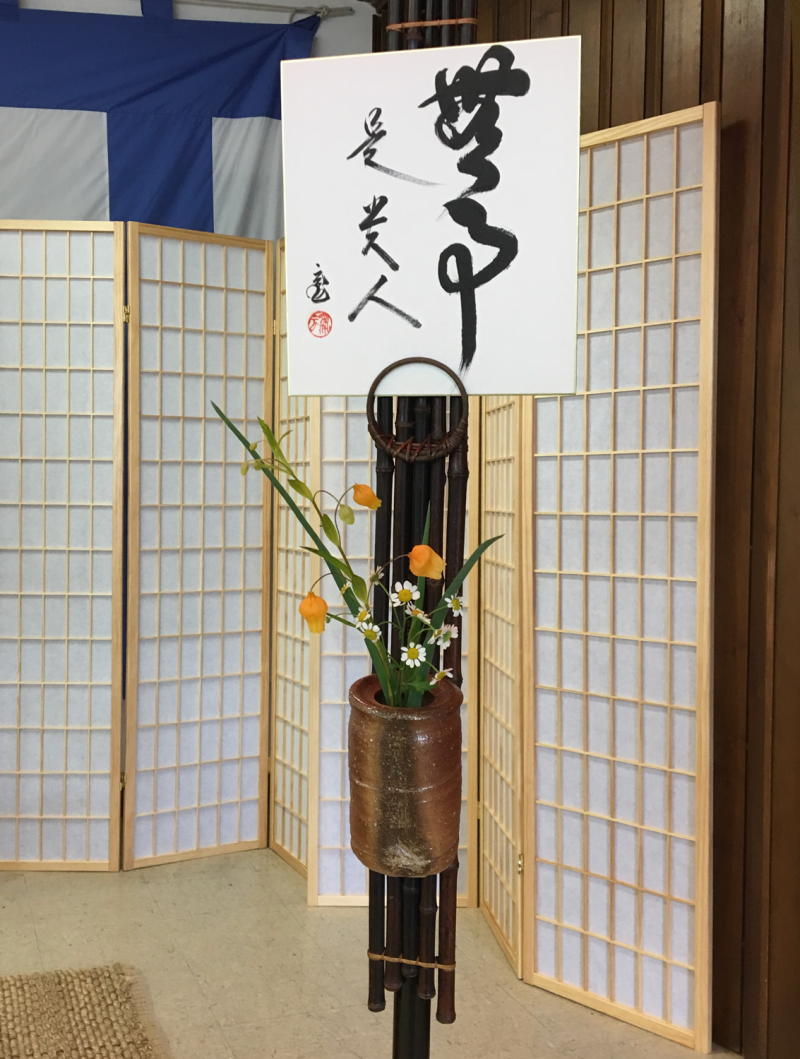
A placard that can be mounted informally to place a brushed poem or Zen phrase in the anteroom, waiting room, or tea room.
花押 (kaō)
cipher
Shorthand signatures of tea masters that may be placed on storage boxes as a sign of authentication.
茶花 (chabana)
flowers for tea
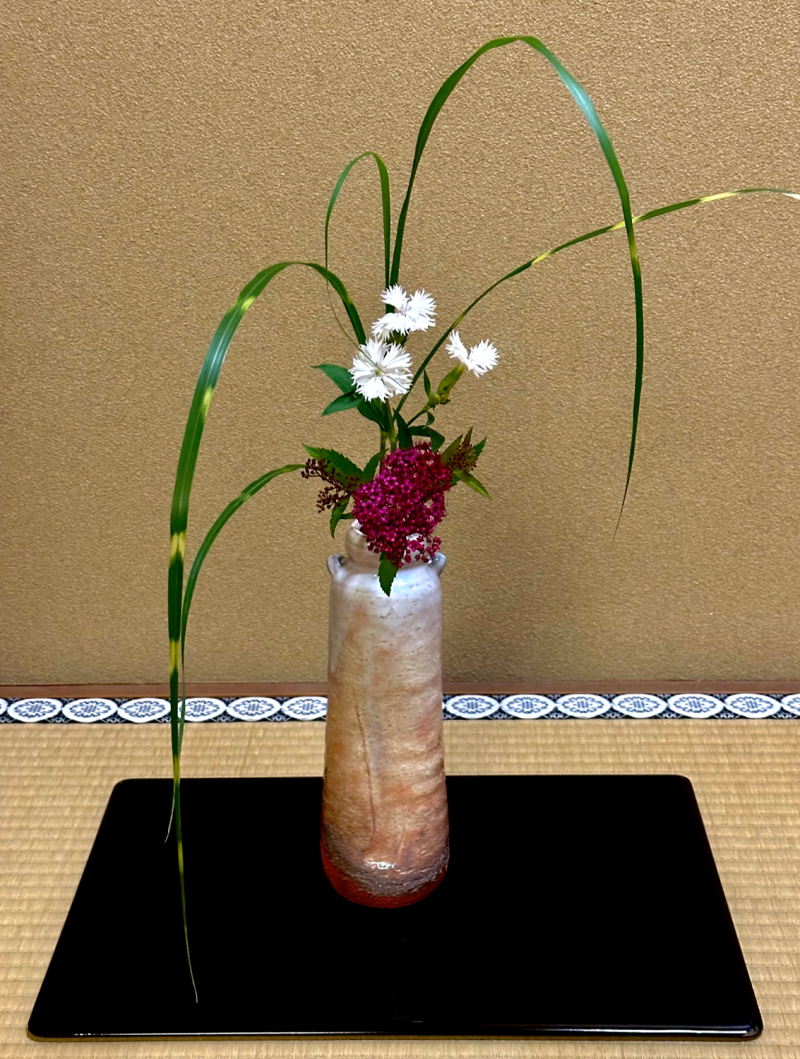
(lit. tea flowers) The art of arranging flowers that are used in the tea room is different from ikebana "flower arrangement," which is an entirely separate traditional art to chanoyu. Flowers for the tea room should be seasonal, appear as they are in nature, and be free of scent and thorns.